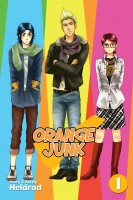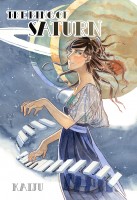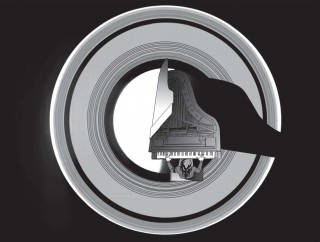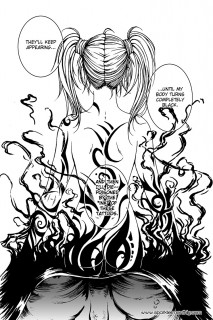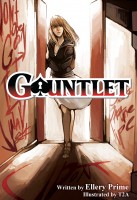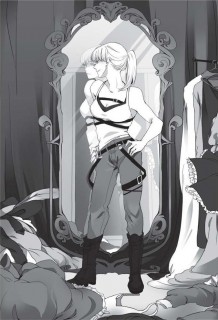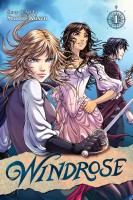 Creator: Studio Kôsen
Creator: Studio Kôsen
Publisher: Chromatic Press
ISBN: 9781987988055
Released: November 2015
Original run: 2014-2015
Windrose is an ongoing series by Studio Kôsen, a Spanish creative team made up of two comics artists: Aurora García and Diana Fernández. Kôsen has had several comics as well as an artbook released in English in the past, including Saihôshi: The Guardian (my introduction to the team’s work), Stallion, and Daemonium. Currently, both Windrose and Kôsen’s previous work Lêttera are being serialized online through Chromatic Press’ multimedia magazine Sparkler Monthly. I was very excited when Windrose was first announced–I love Kôsen artwork and am a huge fan of Chromatic Press and Sparkler Monthly–and even more so when it came time for the first volume to be released in print. Windrose, Volume 1, completed in 2015, collects the first six chapters of the comic originally serialized between July 2014 and May 2015, as well as some additional notes from the creators about the comic and its historical setting.
On the day of her seventeenth birthday, Danielle received a strange gift from her father, a French merchant who has been away from their Barcelona home for months. Inside the secret compartment of a cleverly designed puzzle box is a miniature astrolabe and a letter asking her to keep it safely hidden away as his own life is in grave danger. Instead passively waiting for more information, Danielle decides to leave her Spanish mother behind in order to search for her father in France. Danielle’s mother never approved of Danielle’s more adventurous nature, trying with little success to raise her daughter to act like a proper lady. And Danielle’s journey to Marseille is not without incident–it’s dangerous for a young woman of the upper class to travel alone in the seventeenth century. After pirates attack the ship she is sailing on, Danielle is rescued by two fellow travelers, Angeline and Leon, whose reasons for helping are less than virtuous. Danielle may be in well over her head in more ways than one.
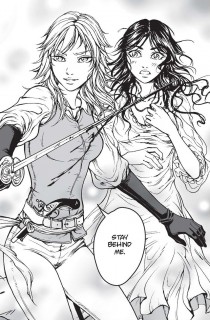 After only a single volume of Windrose I’m already absolutely loving the series. In fact, Windrose may very well be my favorite work by Kôsen to date. The art in the comic is gorgeous, and the inkwork in particular is especially striking. Kôsen has also made the effort to research the time period, including its clothing. The resulting character designs are wonderful in their details, whether the attire called for is intricate formal wear or simpler, more practical dress. Already the story of Windrose has moved through a wide variety of settings which Kôsen has expertly conveyed without visually overwhelming the scenes. There are countryside estates and lavish manors, docks and seafaring vessels, shady bars, dark alleyways, and even an abbey complete with secret passages. And of course there are the exceedingly attractive protagonists and antagonists of the series, too, each with their own distinct personality and ways of expressing themselves.
After only a single volume of Windrose I’m already absolutely loving the series. In fact, Windrose may very well be my favorite work by Kôsen to date. The art in the comic is gorgeous, and the inkwork in particular is especially striking. Kôsen has also made the effort to research the time period, including its clothing. The resulting character designs are wonderful in their details, whether the attire called for is intricate formal wear or simpler, more practical dress. Already the story of Windrose has moved through a wide variety of settings which Kôsen has expertly conveyed without visually overwhelming the scenes. There are countryside estates and lavish manors, docks and seafaring vessels, shady bars, dark alleyways, and even an abbey complete with secret passages. And of course there are the exceedingly attractive protagonists and antagonists of the series, too, each with their own distinct personality and ways of expressing themselves.
In addition to being beautifully drawn, the characters themselves are a large part of why I’m enjoying Windrose so much. At first Danielle seems to be sheltered and naive to the ways of the world, but she’s intelligent and learns quickly. She also has a particular talent for solving puzzles and riddles, encouraged and instilled in her by her father. Not much has been revealed yet about Angeline and Leon’s pasts, but they make a strong impression from the start. Angeline is a brash young woman with an aggressive streak which, when combined with her sword skills, allows her to pose as a man if it happens to be convenient or serve her purposes. Leon, while just as beautifully handsome as Angeline, has a more reserved and cautions nature which helps to balance her hotheadedness. The three of them together make a somewhat peculiar trio, but already Danielle is starting to rely on the other two even if she can’t quite trust them. With spectacular artwork, engaging characters, and exciting adventure, Windrose is off to a magnificent start.

